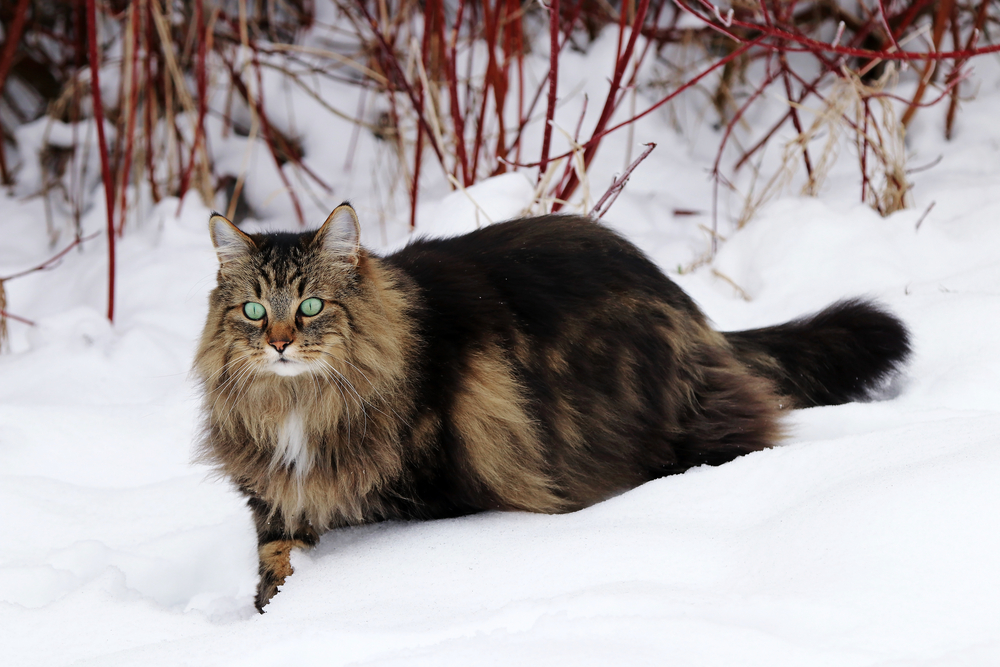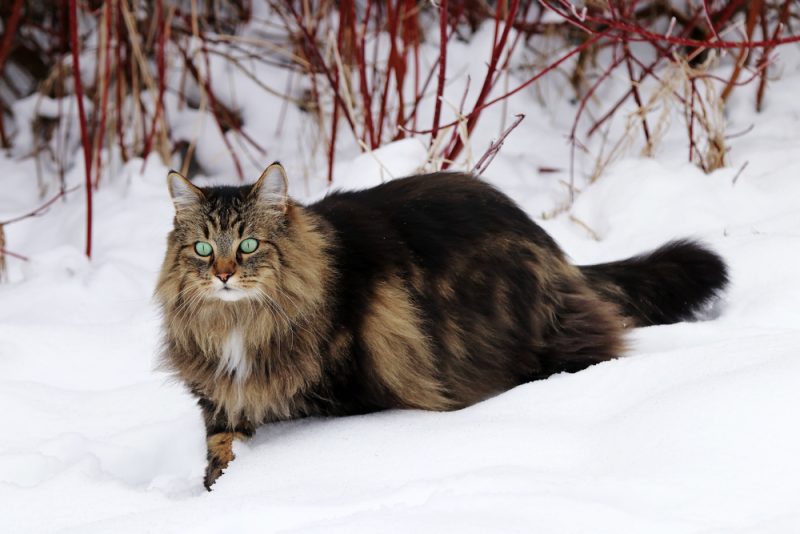Click to Skip Ahead
Cats are beautiful creatures with elegant bodies, soft fur, adorable ears, and gorgeous eyes. Cats’ eyes come in several colors, including blue, yellow, and green.
Green isn’t the most common eye color in cats, but it’s far from unusual! It’s possible to find purebred cats and mixed breeds with sparkling green eyes. Keep reading to learn more about green-eyed cats!
Green Eyes Facts
1. Genetics Determines if a Cat Will Have Green Eyes
Genetics determines a cat’s eye color. The colored part of a cat’s eye is called the iris. It opens and closes to allow light into the eye. The iris enlarges the pupil in low-light conditions to let in more light and contracts it in bright sunlight.
Cats’ irises have pigmented cells that influence their eye color. Deeply pigmented irises tend to be gold or orange, but cats with only moderate amounts of iris pigmentation usually have eyes that shade towards green. Blue eyes result when there’s no pigment in a cat’s iris.
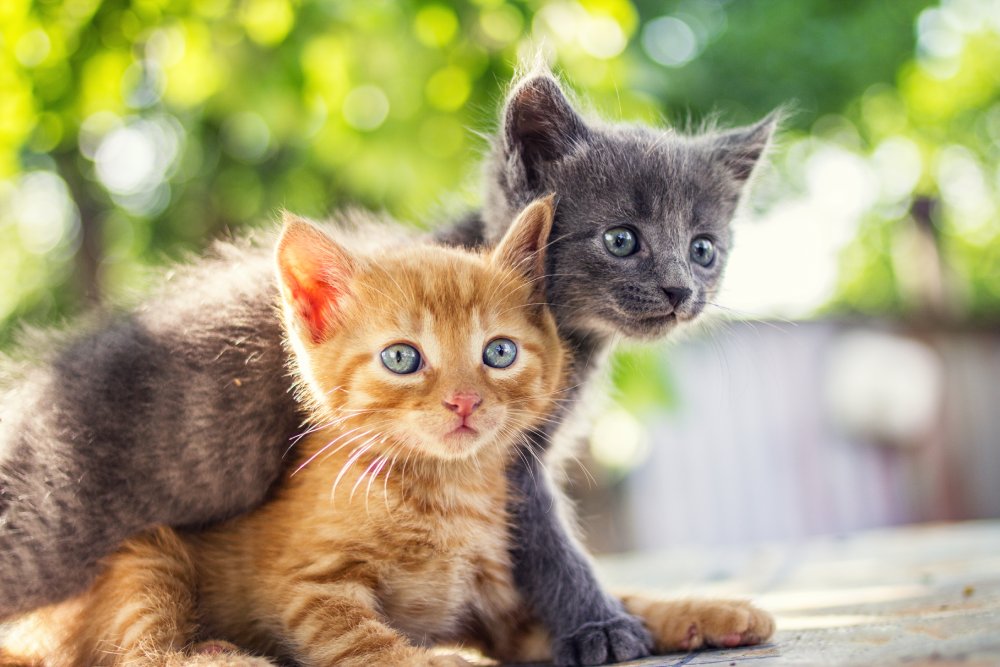
2. Cats Can Have One Green and One Blue Eye
Cats can have different-colored irises. The condition is called heterochromia, and it’s relatively common, particularly in kitties with white coats. However, it also occasionally pops up in pets with other coat colors.
Cats with heterochromia can have one blue and one green, yellow, or brown eye. The condition doesn’t impact their vision.
3. Several Cat Breeds Have Green Eyes
Several breeds can have green eyes, including Abyssinians, Norwegian Forest Cats, Egyptian Maus, Havana Browns, British Shorthairs, Sphynx cats, and Turkish Angora cats.
There’s only one official eye color (according to the Cat Fanciers’ Association) for Russian Blue kitties, which is a gorgeous vivid green. There are also plenty of mixed-breed felines with sparking green eyes, and black cats can have yellow, orange, or green eyes.
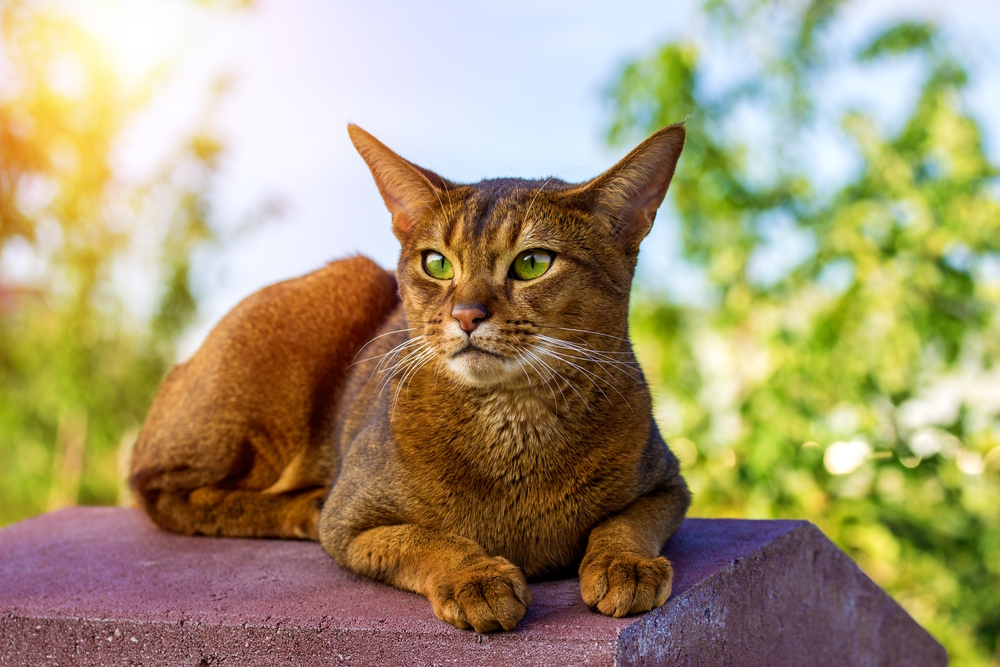
Frequently Asked Questions
How Many Eye Colors Exist in Cats?
There’s a range of cat eye colors, and they can have any shade from blue to copper. Orange, brown, yellow, amber, hazel, and blue irises are the most prevalent. The ancestor of today’s domestic cats (and tigers and lions) likely had brown or gray eyes. Their gray-eyed ancestor is part of the reason domestic cats can have so many eye colors.
Do Kittens’ Eyes Change Colors?
Yes, they do! All kittens are born with closed eyes and folded-over ears, so they can’t see or hear during their first weeks of life. They’re tiny when they first enter the world, and most only weigh a few ounces. Young kittens can’t even go to the bathroom without their mother’s help.
Their eyes open after about 2 weeks, at which point they have blue eyes. Their eyes begin changing to their adult colors when kittens are around 7 weeks old. By the time most kittens reach about 8 weeks, their eyes are their permanent colors, but it can take a bit longer for some.

Do Adult Cats’ Eyes Ever Change Colors?
Eye color changes in adult cats can indicate a health issue that needs to be checked out by a veterinarian, as conditions such as uveitis can be responsible. Cats can also suffer from iris atrophy, a degenerative condition that can change the shape of the iris.
However, the condition doesn’t affect the color of the irises. Conditions such as glaucoma and uveitis can cause iris degeneration, but it can also be part of the natural aging process.
How Good Is Cat Vision?
Cats have exceptional visual acuity, and their visual fields are slightly larger than those of humans. They can zoom around in low-light conditions, thanks to their large corneas and reflective tapeta lucida, which increase the amount of light that hits their retinas.
They have trouble focusing on objects that are close by, but their whiskers help them compensate by picking up air currents transmitted by creatures scurrying nearby.
Cats rely heavily on their senses of smell, touch, and hearing to understand the world. Their Vision is less important to them than to humans. Blind cats get around quite well and generally have far less difficulty adjusting to vision problems than humans, for whom vision is the primary sense.
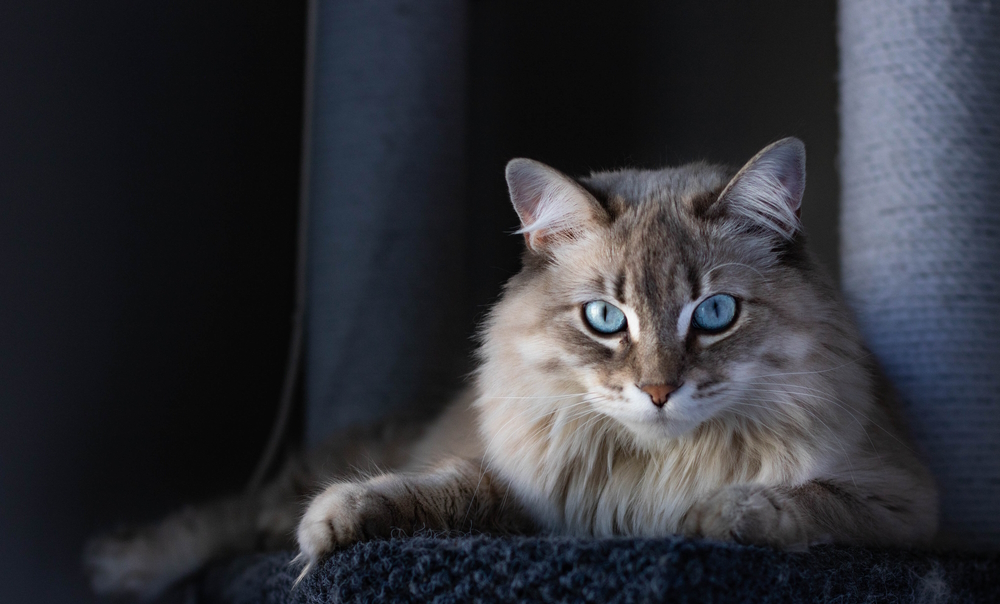
Which Eye Colors Are Most Common Among Dogs and People?
Most dogs have eyes that fall somewhere between hazel and brown, but they can also have amber, green, and yellow eyes. For instance, Siberian Huskies, Australian Shepherds, Border Collies, and Weimaraners all have gorgeous blue eyes.
Brown is the most common human eye color worldwide, but people can have eyes that range from light blue and gray to dark brown. No two people have the same eye color, and the variations in hue are endless.
Conclusion
Cats’ eyes can have several colors, including yellow, brown, hazel, blue, and green. Yellow is the most common shade among cats, but it’s not unusual for them to have green eyes. It’s even possible for them to have differently colored eyes.
A cat’s eye color is determined by genetics. Pedigree breeds such as Sphynx and Turkish Angora cats have green eyes, but there are also mixed breeds with sparking emerald irises.
Featured Astrid-Gast-Shutterstock

